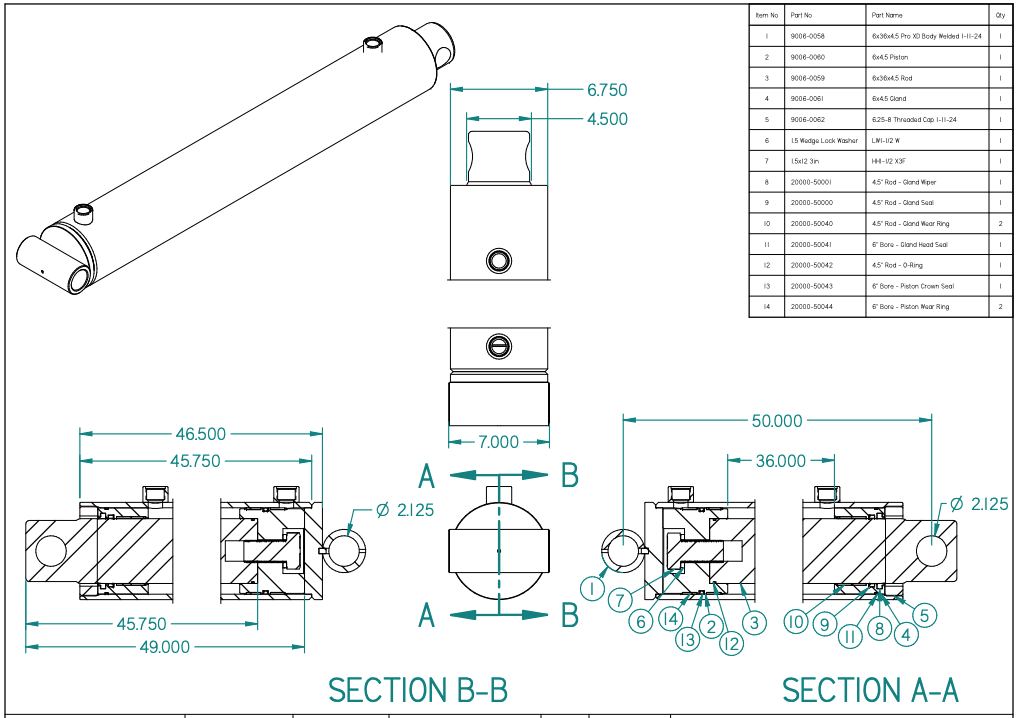Calculating the force exerted by a hydraulic cylinder is essential for understanding its capabilities and ensuring it meets the requirements of your application. The force generated by a hydraulic cylinder depends on the pressure of the hydraulic fluid and the surface area of the piston.
The formula for calculating the force of a hydraulic cylinder is:
Where:
- Force (F) is the force exerted by the hydraulic cylinder (measured in pounds or Newtons).
- Pressure (P) is the hydraulic fluid pressure applied to the cylinder (measured in PSI or Pascals).
- Area (A) is the cross-sectional area of the piston, which is calculated based on the diameter of the piston (measured in square inches or square millimeters).
Step-by-Step Process to Calculate the Force
-
Determine the Pressure: The pressure in the hydraulic system is often given in pounds per square inch (PSI) for imperial systems or Pascals (Pa) for metric systems. If the pressure is provided in a different unit, make sure to convert it to PSI or Pascals as needed.
-
Calculate the Area of the Piston: The area of the piston can be calculated using the formula for the area of a circle:
Where:
- A is the area of the piston (in square inches or square millimeters).
- D is the diameter of the piston (in inches or millimeters).
- π is approximately 3.1416.
If you know the bore diameter (the diameter of the cylinder) and the rod diameter (if applicable for the rod side force), you can calculate the force for both sides (the rod side and the cap side).
-
Multiply the Pressure by the Area: Once you have the area, multiply it by the pressure to calculate the force exerted by the cylinder. The force will be in pounds or Newtons, depending on the units used for pressure and area.
Example 1: Calculating Force on the Rod Side
Let’s say you have a hydraulic cylinder with a piston diameter of 4 inches, and the pressure in the system is 2000 PSI.
-
Find the Area of the Piston:
-
Calculate the Force:
So, the hydraulic cylinder would exert 25,132.8 pounds of force on the piston side.
Example 2: Calculating Force on the Rod Side (With a Rod)
For the rod side, you need to account for the area of the rod, which reduces the effective area of the piston.
Let’s assume the same 4-inch piston diameter, but now there is a 1-inch diameter rod inside the cylinder. The pressure is still 2000 PSI.
-
Calculate the Area of the Piston (as done previously):
-
Calculate the Area of the Rod:
The area of the rod is calculated using the same formula for the area of a circle:
-
Calculate the Effective Area of the Rod Side:
The effective area on the rod side is the area of the piston minus the area of the rod:
-
Calculate the Force:
So, on the rod side, the cylinder exerts 23,562 pounds of force.
Conclusion
To calculate the force of a hydraulic cylinder, you need to know the hydraulic pressure and the piston’s cross-sectional area. The force exerted by the cylinder increases with both pressure and the area of the piston. The presence of a rod or other features may affect the calculation, particularly on the rod side of the cylinder. Understanding this calculation is vital for selecting the right hydraulic cylinder for your application, ensuring it can handle the required force for optimal performance.

